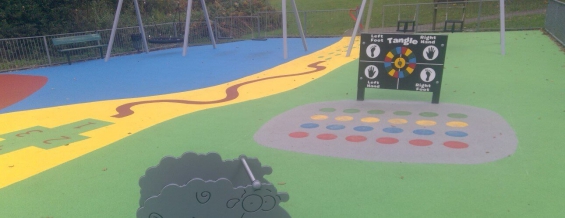 Add My Company
Add My Company

School is where we spend the most time as children, and we are now realising that it is not just a place for academic learning but an environment where children grow physically, mentally, and socially. One crucial yet often overlooked aspect of child development is sensory play.
Sensory play refers to activities that stimulate a child’s senses—touch, sight, hearing, smell, and perhaps even taste. These activities are essential for brain development and help children process and understand the world around them.
What is Sensory Play?
Sensory play involves activities that engage a child’s senses and encourage exploration and creativity. Examples include playing with sand, water, musical instruments, or textured surfaces. Sensory play can be both structured and unstructured, providing children with the freedom to explore and experiment in a safe environment.
KEY ASPECTS OF SENSORY PLAY
- Touch: Sand, water, textured surfaces.
- Sight: Bright colours, contrasting patterns, reflective surfaces.
- Hearing: Musical instruments, wind chimes, nature sounds.
- Smell: Aromatic plants, scented play dough.
- Taste: Edible sensory activities (e.g., fruit painting).
The Benefits of Sensory Play Equipment
Cognitive Development
Engaging in sensory play helps develop cognitive skills such as problem-solving, creativity, and critical thinking. By exploring different textures, sounds, and visuals, children enhance their understanding of cause and effect, improve their memory, and develop the ability to categorise and compare objects.
Language Development
Sensory play naturally encourages descriptive language. As children explore different sensations, they are motivated to describe what they feel, see, or hear. This helps expand their vocabulary and improves their ability to express thoughts and emotions.
Fine and Gross Motor Skills
- Fine Motor Skills: Activities like pouring water, handling small objects, or using tools like scoops and tweezers improve hand-eye coordination and dexterity.
- Gross Motor Skills: Larger equipment, such as climbing structures or balance beams, helps develop balance, coordination, and strength.
Emotional Regulation
Sensory play provides a calming effect on children, helping them manage stress and anxiety. The repetitive actions of pouring, moulding, or swaying can soothe children and provide an outlet for emotional expression. This is particularly beneficial for children with sensory processing disorders or autism.
Social Skills
Working together on sensory play equipment encourages children to share, negotiate, and cooperate. They learn the importance of teamwork, empathy, and understanding others’ perspectives.
Inclusivity and Accessibility
Sensory play equipment is designed to be inclusive, allowing children of all abilities to participate. This fosters a sense of community and belonging, ensuring that every child feels valued and included.
Types of Sensory Play Equipment
- Sand and Water Tables: These tables allow children to explore different textures, practice pouring and scooping, and engage in imaginative play. Adding toys like boats, funnels, or moulds enhances the experience.
- Musical Panels: Outdoor musical panels with drums, chimes, or xylophones stimulate auditory senses and encourage creativity. Children can experiment with different sounds, rhythms, and tunes.
- Sensory Pathways: Pathways featuring different textures, shapes, and colours stimulate touch and sight. They can include stepping stones, balance beams, and sensory mats.
- Interactive Panels: Panels with gears, mirrors, textures, or mazes provide endless opportunities for exploration and fine motor skill development.
- Aromatic Gardens: Gardens filled with scented plants like lavender, mint, and rosemary stimulate the sense of smell while providing a peaceful, natural environment.
- Tactile Walls: Walls with various textures—rough, smooth, bumpy, soft—offer a unique sensory experience. They encourage tactile exploration and can be integrated into existing playground structures.
Implementing Sensory Play Equipment in Your School
Assessing Needs and Space
Before choosing sensory play equipment, assess the needs of your students and the available space. Consider the age range, abilities, and interests of your students to ensure the equipment caters to a wide audience.
Selecting the Right Equipment
- Durability: Ensure the equipment is built to withstand heavy use and various weather conditions.
- Safety: Check for non-toxic materials, rounded edges, and slip-resistant surfaces.
- Inclusivity: Opt for equipment that is accessible and suitable for children with different abilities.
- Customization: Many sensory play equipment options can be customised to fit your school’s theme or specific requirements.
Creating Zones
Divide your sensory play area into zones to accommodate different activities. For instance:
- Calming Zone: Aromatic garden, sensory mats, musical panels.
- Exploration Zone: Sand and water tables, tactile walls.
- Active Zone: Balance beams, climbing structures, pathways.
Encouraging Teacher Involvement
Educate teachers about the benefits of sensory play and involve them in the design and implementation process. This will help them integrate sensory play into their lessons effectively.
Transform Your Playground with Sensory Play Equipment
Sensory play equipment is more than just playground features; it’s an investment in your students’ development. By providing a stimulating, inclusive environment, you offer children opportunities to grow cognitively, emotionally, and socially. Moreover, sensory play equipment creates a dynamic, engaging space that encourages creativity, exploration, and learning.
Contact us today to explore customisable sensory play equipment options and transform your playground into a vibrant, inclusive learning environment!
For more information on WHY YOU NEED SENSORY PLAY EQUIPMENT AT YOUR SCHOOL talk to Caloo Ltd

